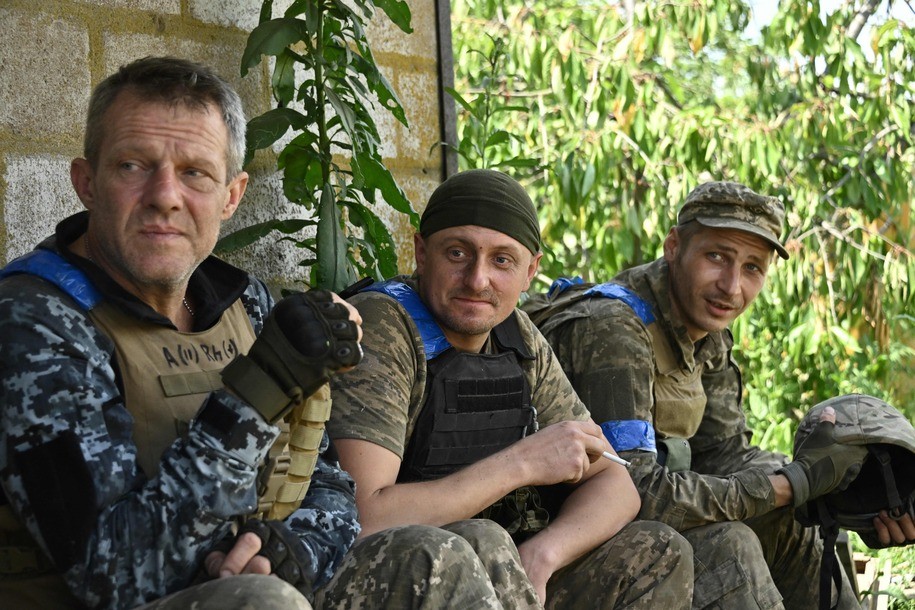A war of attrition is a war where the goal of both sides is to destroy the enemy army through the accumulation of losses. This is in contrast to a battle of maneuver, where both sides attempt to drive their forces into key positions that would allow the rapid destruction of the enemy army.
Because both sides take pains to conceal the number of personnel and equipment losses, it can be difficult to determine the success or failure of an attritional operation. Such an operation’s goal may be to draw the enemy resources into a kill zone from which the enemy cannot afford to retreat, where the attacker holds a sustainable advantage. That is, the operational goal may be to efficiently destroy the enemy with as few losses of valuable assets as practicable.
However, these types of battles, even where successful, can be deeply frustrating and demoralizing for the attacker, making their success or failure very difficult to evaluate from the outside.
The battle of Krynky appears to be this type of operation.
The battle of Krynky is taking place about 40 kilometers east of the city of Kherson in southwestern Ukraine, one of two areas where Ukraine has made a push to secure ground on the left (south/east) bank of the Dnipro River.

Krynky’s importance lies in its proximity to the town of Korsunka, just a few miles to the east, where Ukraine had conducted training exercises constructed pontoon crossings in the recent past.

After landing north of the village in the marshland terrain by the riverbank, Ukrainian forces pushed into the western portion of the Krynky on Oct. 30, and have been engaged in fierce fighting to try to expand their area of control ever since, primarily east and south.
One natural interpretation of Ukrainian intentions might have been to secure a route to the T2206 Highway, before pushing east to secure the roads south of Krynky, and then to attack the town from three sides.

Ukraine’s forward momentum was stopped, and Russian troops began driving Ukrainian troops backward in mid-December.
The momentum of the fighting began to shift in mid-December as Russia continued a relentless campaign of air bombardment of the region, For example, Russian air forces launched 45 verified air strikes in a single week in the area in late November. Combined with the deployment of the new Russian 104th Airborne Division around the same period, this appears to have begun to have an effect.
Russian airstrikes and drone attacks also continued targeting the crossing points supplying and reinforcing Ukrainian positions in Krynky. Open-source intelligence analyst Andrew Perpetua reportedly counted at least 50 Ukrainian boats damaged or destroyed by Russian strikes since early November. While Ukraine inherited likely hundreds of the small Soviet-era tugboats frequently used to carry supplies across the river, the loss of personnel and equipment likely is taking a toll.
Ukrainian control around Krynky reached its maximum extent in late November to early December, before losing much of what had been gained in the eastern half of the village and the forest south of the village by late December.

Reports from Ukrainian soldiers leading the fighting in Krynky are horrific. The New York Times provided a detailed report based primarily on an interview of “Maksym,” a member of the marine brigade who had been wounded in Krynky and evacuated to a field hospital.
Maksym verifies Ukrainian claims that Russian artillery in the area had been largely suppressed by Ukrainian counterbattery fire, but his platoon came under relentless attack from Russian air strikes and tank and mortar fire. Maksym describes how his platoon was forced to take shelter in a basement in the village, and was frozen in place by the bombardment, with nearly every member of the platoon injured, and three men killed in an air strike.
After Maksym’s platoon was finally ordered to retreat, a chaotic scene unfolded as the boat that was to take the platoon back failed to appear, and the wounded members of the platoon were slowly evacuated piecemeal through boats arriving on shore on other missions over many hours—even as Russian glide bomb attacks continued on the riverbank.
Another anonymous Marine described the attack on the left bank as a “suicide mission.”
A separate report from an injured marine complains that most of the marines fighting in Krynky are green replacement troops that have only received minimal training, and many of the supposed “marines” cannot even swim.
However, there are reasons to believe that the Ukrainian General Staff has a reason beyond obstinacy or callous indifference in continuing to feed Marines into the Krynky meatgrinder.
While Ukraine has shuttled what’s widely believed to be, at most, a few hundred marines into Krynky, Russia had initially garrisoned the village with elements of the Russian 810th Marine Brigade—which were thrown out of the western half of the village and urgently needed help. Russia then quickly committed its local reserves, elements of the 70th Motor Rifle Division.
Despite the arrival of reinforcements, Ukraine continued to make gains into late November, when Russia committed the 6000-strong 104th Guard Airborne Division (GAD). The 104th GAD was a newly created Russian Airborne unit, a fifth division in what was traditionally a four-division paratrooper organization. The unit was largely formed in early October, but after less than two months of training, it was rushed to Krynky as the Russian command believed their presence on the front was critically necessary.
The threat of Ukrainian strategic gains appears to have forced Russia to mortgage its future combat power to stabilize its situation in the short term.
Furthermore, Russian military bloggers describe horrific conditions and heavy losses as Russian troops are forced to engage Ukrainian positions while under constant attack from Ukrainian artillery and FPV drones. The U.K. Ministry of Defense believes the 104th GAD suffered “exceptionally heavy losses” in its attacks, which comports with numerous verified Russian equipment losses in the area of valuable modern APCs like BTR-82As, tanks like the T-72, T-80 tanks, and numerous self-propelled mortars.
A closer examination of the conditions described by Maksym in the New York Times piece also verifies certain key elements of a Ukrainian advantage—the reliance of Russia on short-range weapons (tanks and mortars) rather than long-range artillery.
Russian howitzers can generally strike at Ukrainian targets from 20 kilometers away or more, but Russian mortars must approach within around 10 kilometers of their targets. Russian tanks, generally within only 2 to 3 kilometers.
With Ukrainian counterbattery fire effectively suppressing Russian long-range artillery, the Russian army is being forced to rely on weapon systems that must enter the Ukrainian kill zone to fight—shorter-ranged armored mortars, tanks, and mechanized infantry.
Furthermore, Ukraine appears to be taking aggressive steps to deal with the threats of Russian airstrikes on Kherson Oblast. Eight Russian jets were shot down over southern Ukraine in three weeks, leading to intense speculation as to the cause, While some suggested these interceptions were the result of Ukrainian F-16s, the Ukrainian Air Force forcefully denied these rumors.
Russian and Ukrainian sources also speculated the shoot-downs were due to Ukraine positioning a Patriot Missile System close to the front lines around Krynky, but no evidence to back this assertion has been presented as of yet, either. What may have particularly alarmed the Russians was the loss of multiple Su-34 fighter bombers, which are among the most sophisticated and expensive Russian aircraft in service. Those Su-34s are believed to have been the source of many of the glide bombs that were harassing Ukrainian forces around Krynky.
Whatever the cause, the interceptions appear to have alarmed the Russian Air Force sufficiently to lead to a radical reduction in the scope of the intensive bombing campaign along the Dnipro River.
In the week from Dec. 24 to Dec. 30, there were only six Russian air strikes in the Kherson Oblast area recorded by Perpetua—compared with what were regularly 30 to 40 or more air strikes conducted throughout November and into mid-December.
In the absence of hard data on personnel losses by both sides, it remains difficult to say who is suffering more greatly in the battle of Krynky. While a massive Ukrainian push across the river to secure a pontoon crossing and capture the villages surrounding Krynky and Korsunka would be ideal, success in an attritional war need not be measured solely in those terms.
Krynky may represent a location where Ukrainian leadership felt they could “fix” Russian forces into a kill zone, where Russian troops can be funneled into an area where Ukrainian firepower is at an advantage. From where Russians cannot afford to retreat due to its strategic importance.
If this is so, the fact Ukraine chose to send green replacement troops of the 35th Marines, rather than the surviving well-trained crack units of the 36th, 37th, or 38th Marine Brigades who are believed to be resting and replenishing their ranks, would seem to make logical sense. What’s more, the 35th Marines have hardly lost any armored vehicles in Krynky, as they appear to have brought precious few over to the opposite bank, making armored losses particularly lopsided.
In the coldest, most ruthless sense, the inexperienced platoons of the 35th Marines sent to die in Krynky may be bait to draw Russian troops into Ukrainian artillery and drone kill zones.


